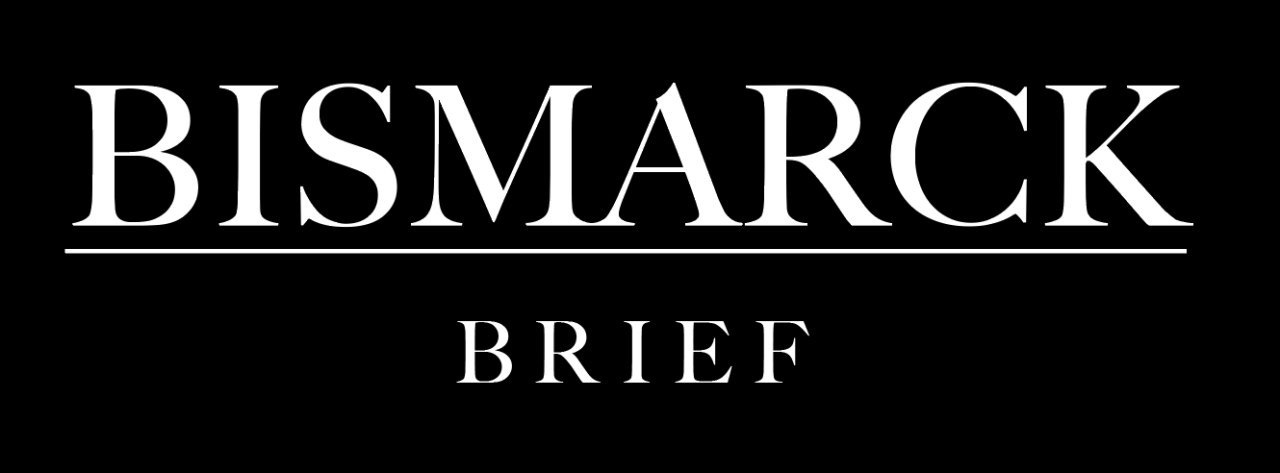How Bismarck Brief is Upstream of Markets
What is the stock price performance of publicly-traded companies after they are profiled in Bismarck Brief? Celebrating the 100th Brief, an answer to this question.
Last week, we issued the 100th Bismarck Brief, on the rare case study in the reform of a large modern state provided by Ukraine since 2014. Even having reached this milestone, I and the whole team at Bismarck Analysis continue to be gratified by the positive attention and thoughtful feedback from our sophisticated readers! I warmly thank you for your continued interest in our work. If you are not already a paid subscriber, subscribe here.
This occasion is not only a milestone, but a natural point at which we can treat the Briefs like a data set of their own. To a degree, this allows us to evaluate our own analytic performance in new ways. For example, one interesting and easily-answered question is: what happens to the stock prices of publicly-traded companies after they are profiled in Bismarck Brief?
Bismarck Brief is not financial or investment advice (see full disclaimer below).1 But, generally, over a long-enough time period, a positive assessment of institutional functionality or live player strategy in the context of business will eventually be reflected by the wider markets as well, as the fruits of such functionality become widely, if slowly, recognized.
Below is a graph of the share price performance of every publicly-traded company covered in Bismarck Brief since the date it was covered to early September 2023:

If one had invested the same amount of funds into each company that Bismarck Brief positively assessed on the date the corresponding Brief was published, one would have invested fifteen times and the total investment would have grown by +32%. Had one instead invested into the S&P 500 fifteen times on those same dates, it would have grown only +11%.
The Brief only evaluates institutions that are plausibly strategically important, so the decision to profile a company at all means it is worth attention, whether or not its valuation subsequently grows or declines. If one had invested the same amount of funds into each company Bismarck Brief covered, whether positive or negative, one would have invested twenty-one times and the total investment would have grown by +24%, compared to +10% for the S&P 500.
Every investment strategy is different and more complex in practice than this simple thought experiment. But this shows that Bismarck Brief can provide a unique and useful perspective for investors that is upstream of markets, even though our focus is exclusively on investigating the structures of institutions and strategies of live players.
Nvidia, the best-performer at +174%, is an excellent qualitative example. Readers of the Bismarck Brief were made aware of Nvidia’s central importance to the booming artificial intelligence sector on December 14, 2022. By that Christmas, Nvidia’s stock price had fallen -12%. But then, it began a meteoric rise. Today, it has nearly tripled since the Brief. Nvidia is a positive outlier. But so was the Brief’s exceptionally positive assessment of Nvidia’s technological leadership. The Brief concluded:
[...] insofar as the computationally intensive deep learning model of AI is the most promising to usher in an AI revolution in technology and industry, Nvidia is one of the most promising companies poised to benefit from it.
Jensen Huang has shown an ability to undertake long-term, highly risky changes in strategy and achieve a massive payoff that places Nvidia at the center of a very promising market and justifies its enormous valuation. Increased governmental constraints through antitrust and export controls constrain Nvidia’s future vertical integration, but should not hinder its expansion based on its current model, so long as demand for powerful GPUs and other chips continues to increase. Nvidia’s enviable position is leading many would-be competitors to challenge it, but so long as Jensen Huang proves to be a live player while in charge of the company, Nvidia will probably be capable of weathering any competition, whether by simply outcompeting established giants or buying out small startup challengers.
The second-best performance came from Meta, whose stock price has nearly doubled since Bismarck Brief examined it on February 15, 2023. Here Bismarck Brief staked out a contrarian position against the prevailing negative sentiment about the company’s foray into “the metaverse”—Meta’s stock price had collapsed to just a quarter of its 2021 peak at the time. The Brief concluded that Mark Zuckerberg had consolidated control and was seeking to effect a revolution in the hardware and software of computing devices. While success remained an open question, this was a good reason to be positive on the company’s future. This Brief is now publicly-available and you can read it here.
Other high-performers were unlikely to have been brought to the attention of someone who was not a reader of the Brief. For example, the Swedish aerospace and defense company Saab (+47% since the Brief) and the holding company of the influential Wallenberg family in Sweden (+23%). There were the Chinese robotics firms Siasun (+44%) and Estun (+22%). Bismarck Brief examined how The New York Times is a dynastic family business led by a young live player who successfully reformed the newspaper company towards digital subscriptions. It is up +18%.
Opaque political judgments can overrule markets. Bismarck Brief was pessimistic about China’s tech giant Alibaba, whose charismatic founder Jack Ma was punished by the Chinese Communist Party and which has since fallen -32%. But it was optimistic about Tencent, whose founder in contrast holds ceremonial party positions and which has since grown +37%.
There were naturally plenty of positive or negative assessments that have not since correlated to stock price performance. Though led by potential live players, the Brief was pessimistic about the prospects for Australian mining company Fortescue, French conglomerate Bolloré Group, and Taiwanese manufacturer Foxconn, against all of whom geopolitical prospects have changed. They have nevertheless each grown modestly by about +15%. Structurally vital companies like BlackRock and TSMC have also grown only modestly. Only Blackstone and United Therapeutics, though generally positively assessed, have since fallen by about -15% each.
Bismarck Brief is not financial advice. It is not intended to be, nor will it ever be. The Brief researches and analyzes the fundamentals of institutional structure, leadership, and strategy, sometimes for publicly-traded companies, but also for any other kind of key institution. Markets do not care about fundamentals themselves. The valuations of public companies are driven rather by the capricious swings in the collective moods of retail and also institutional investors—the widespread adoption of metrics like ESG demonstrates that political considerations play a significant role as well.
The methodical and careful application of our unique theory can nevertheless help investors ground intuitions and set expectations of the future. The legendary investor George Soros famously viewed his investing strategy as popping the epistemic bubbles of false but widespread beliefs. Such a feat necessarily requires the unique knowledge, social information, and final judgment of an individual investor. But to evaluate a belief as false, one must first have a solid grounding in true fundamentals. In this way Bismarck Brief can crucially help investors, much in the same way as it provides a strategic perspective to companies, philanthropists, and governments. The Brief on George Soros is publicly-available and you can read it here.
If you are not already a paid subscriber to Bismarck Brief, I warmly invite you to subscribe today and join us on this ongoing investigation into the global power landscape:
In addition to our case study of Ukrainian state-building, I would also like to draw your attention to our Brief on the exceptionally effective South Korean nuclear industry, whose exports are nevertheless obstructed by the U.S. for geopolitical reasons. This should be a concern to anyone interested in effecting a large-scale nuclear renaissance in the developed world. We have also recently examined how Estonia replaced bureaucrats with software and what lessons this holds for reform in the rest of Europe and North America.
In other news, you can now listen to many of my essays on my YouTube channel, including “Why Civilization Is Older Than We Thought” or “How Roman Emperors Handled the Succession Problem.” Written by my friend and colleague Marko Jukic, the excellent and deeply thought-out article on space exploration “The Only Reason to Explore Space” is also now available for listening. We are also looking forward to celebrating the two-year anniversary of Bismarck Brief next month.
Until then, I wish you all a pleasant autumn and, soon, a Happy Halloween!
Sincerely,
Samo Burja
Founder and President, Bismarck Analysis
Disclaimer: Bismarck Brief does not offer financial or investment advice. This content is for informational purposes only and should not be construed as professional financial, investment, or other advice. All content is of a general nature and does not address the circumstances of any particular individual or entity. Nothing in this site constitutes professional, financial, or investment advice. Bismarck Analysis is not a fiduciary by virtue of any person’s use or access to Bismarck Brief or this content. Investing in securities carries the risk of losing funds.



